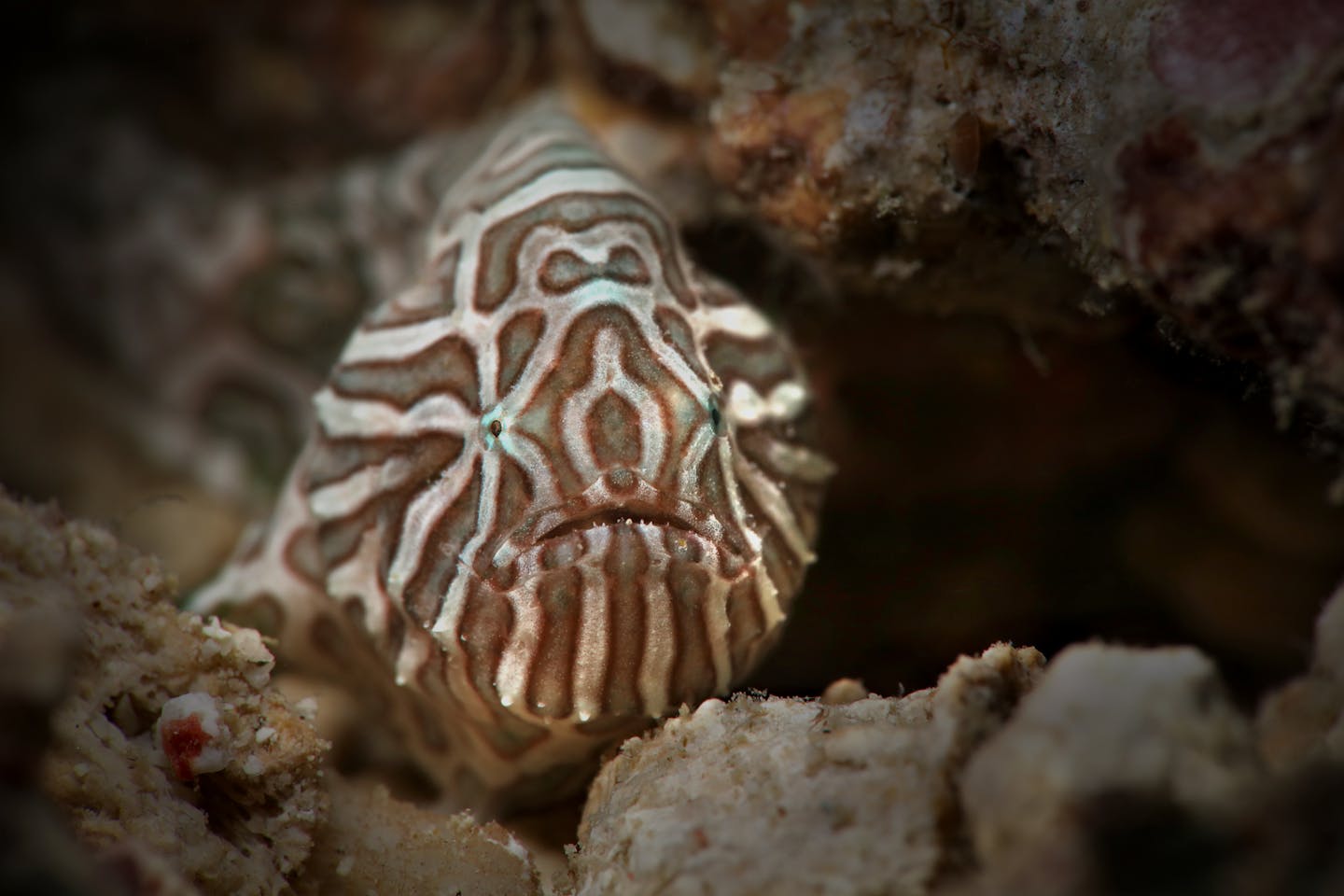Psychedelic frogfish: how unique groovy swirls help hide from predators
Each Wednesday, One Earth’s “Species of the Week” series highlights a relatively unknown and fascinating species to showcase the beauty, diversity, and remarkable characteristics of our shared planet Earth.
Bouncing around the corals of Indonesia is the psychedelic frogfish (Histiophryne psychedelica), whose skin is adorned with a groovy swirl of orange and white. These irregular stripes make a fingerprint pattern that is unique to each individual and acts as camouflage, helping it avoid predators. Tiny aquamarine eyes glow brightly from the center of its flattened head, belying the perpetual frown of its mouth.
The psychedelic frogfish stands out from other fishes not just in its unique coloring, but also in that it does not swim. Instead, it uses its pectoral fins to walk along the sea floor, and sometimes uses its fins to push off the bottom of the seafloor, “hopping” from place to place.
Many frogfish, otherwise known as anglerfish, are known for violently gobbling their prey, and this far-out species is no different. He hides in tiny crevices of the coral, blocking off passages that shrimp and little fish use to get to inner chambers. The frogfish’s thick skin protects him from scratches as he wriggles his way in to these tight spaces and waits — for unsuspecting prey to float by, when, in a flash, he swallows them whole.

Image credit: Courtesy of Shutterstock
Psychedelic frogfish are “egg-brooders”, meaning they keep their eggs attached to their body to protect them from predators.
Female psychedelic frogfish lay large clusters of eggs — one was known to lay about 220 eggs. She wraps her caudal, dorsal, and anal fins around the cluster of eggs and carries them until they hatch, using a unique method of aerating the eggs, by forming a pouch with its fins and fanning them. The length of time to hatching is unknown, as is little else about these trippy fish, as they were only first discovered as recently as 1992. Not much came of that first observation, though, and another sighting was made until 2008.
Psychedelic frogfish is one of the rarest and hardest to find fishes in the world, as it can only be found in one particular location, in the restricted areas of the Ambon and the Molucca islands in Indonesia. As researchers seek to know more about these remarkable angler fish, the importance of protecting the ocean’s coral reefs from climate change and human activity can’t be stressed enough.

.png?auto=compress%2Cformat&w=200)

